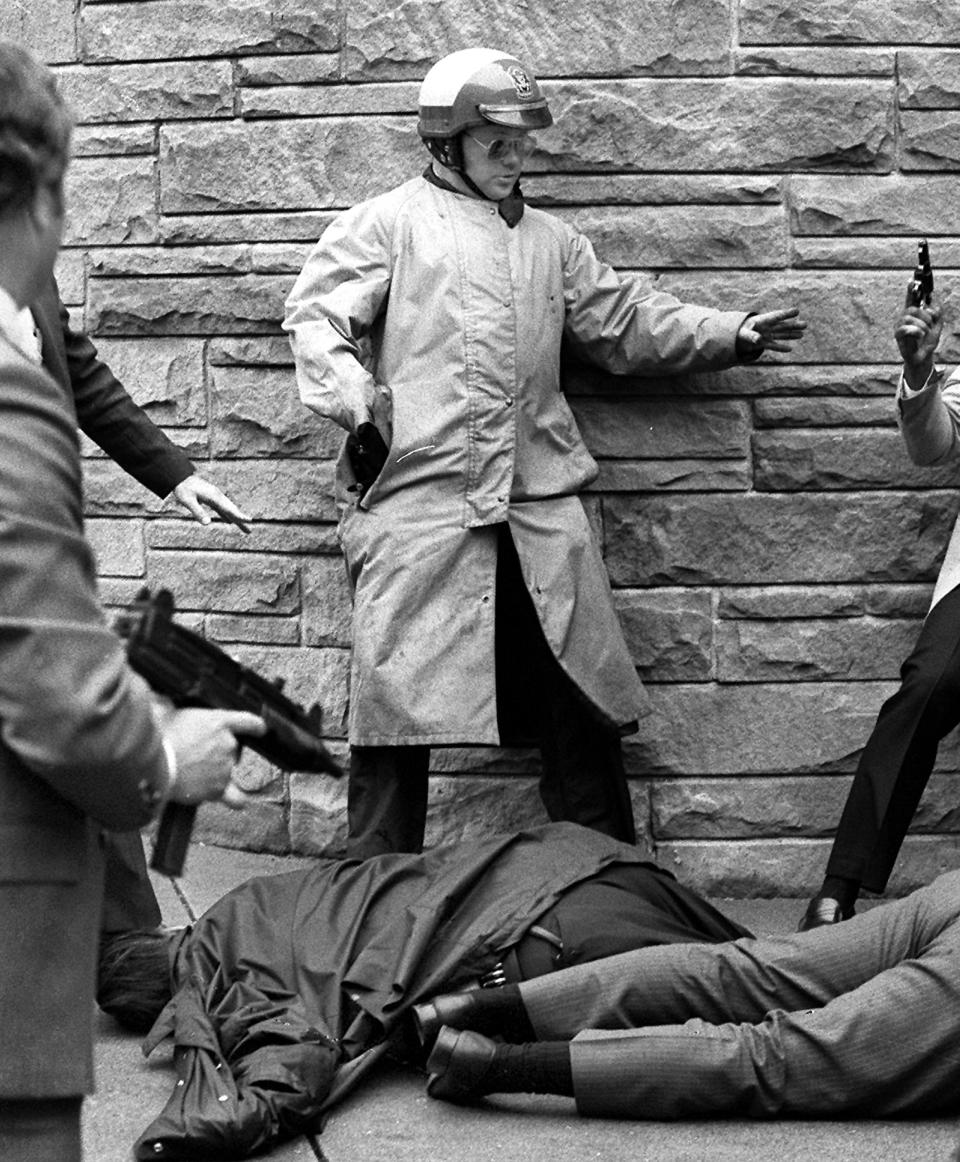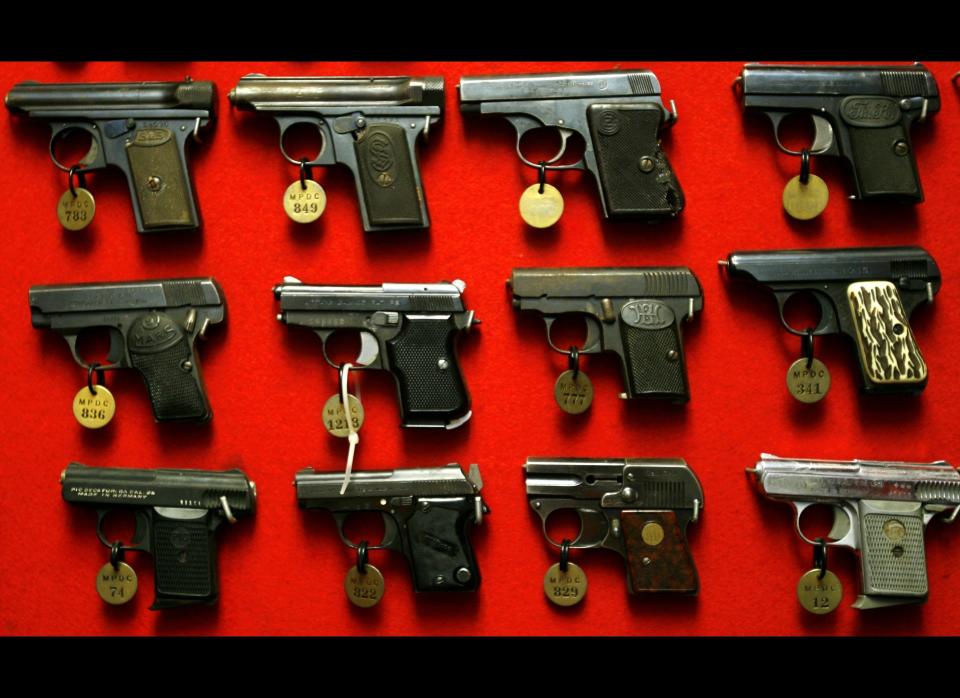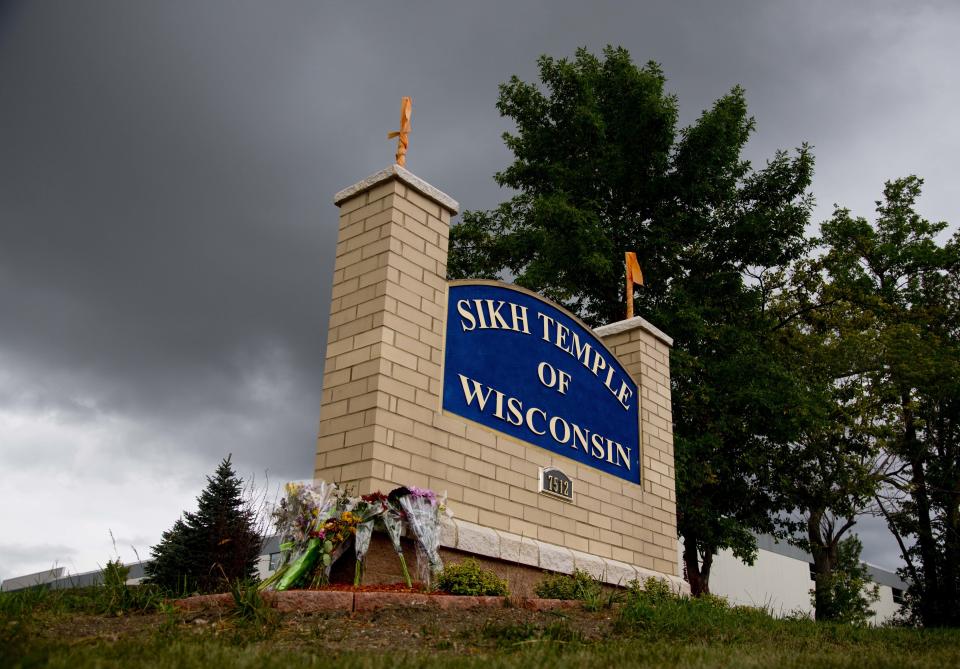Banning Bump Stocks Is A Mostly Meaningless Gesture, And The NRA Knows It
WASHINGTON — A gunman slaughtered 58 people and wounded hundreds more in Las Vegas last week, but the ensuing policy debate has so far focused almost entirely around pieces of plastic on the non-shooting end of the perpetrator’s rifles. As lawmakers breathe up valuable oxygen considering a straightforward, but ultimately paltry proposal to ban so-called “bump stocks,” they’re dodging a much more consequential conversation about guns in the U.S. The NRA couldn’t be happier.
Bump stocks are legal accessories that allow semi-automatic rifles to simulate automatic fire. The device replaces a standard rifle stock ― the piece that rests against the shoulder ― and harnesses the firearm’s recoil to slide it rapidly back and forth onto the shooter’s trigger finger. Gunman Stephen Paddock had outfitted a dozen of his weapons with bump stocks, according to authorities, which allowed him to spray hundreds of rounds into the crowd in under a minute.
Now, some lawmakers are pushing for action to ban the devices. It’s literally the least they could do. Fully automatic weapons have been heavily restricted in the U.S. for decades, and even the NRA has drawn a line at supporting this sort of firepower, at least recently. Still, there’s no guarantee yet that anything will be done to ban bump stocks.
Let’s be clear: The NRA, for all its gun rights absolutism, wants the post-Las Vegas debate to be about bump stocks. These devices make up an entirely insignificant portion of the market. They were unpopular ― until this week, at least ― and even gun enthusiasts saw them as novelty items.
In a video posted to YouTube this week and which as of Friday had more than 600,000 views, gun expert Paul Glasco, the host and co-founder of cable TV show “Legally Armed America,” demonstrated how a pair of bump fire stocks work. He says the devices “are not viable options when it comes to accuracy and trying to be proficient with a firearm,” and “only a jackass would use one.”
Nevertheless, reformist energies are coalescing around this shiny object that most people had never even heard of until this week, ignoring the more familiar weaponry used in one of the deadliest mass shootings in modern U.S. history. There were a total of 23 guns in Paddock’s hotel room. Many of them were assault-style rifles based cosmetically and functionally off military-issue firearms, which Paddock had been free to stockpile over the past few months. Although current law requires federally licensed gun dealers to report to the Bureau of Alcohol, Tobacco, Firearms and Explosives any customer who buys more than one handgun over the course of five business days, that rule doesn’t apply to long guns.
Paddock also had thousands of rounds of ammunition, many of them loaded into high-capacity magazines capable of holding 60 or 100 bullets. Police found even more guns and ammunition at his home.
“No one’s talking about AR-15s or other weapons, even the semi-auto versions, as something we should address,” said Scott Melzer, a professor at Albion College and author of “Gun Crusaders: The NRA’s Culture War.”
“The NRA has very much determined what the conversation is and what it is not,” he added.
So here we are talking about bump stocks.
In a statement Thursday, the NRA offered vague support for cracking down on the accessories, saying that “devices designed to allow semi-automatic rifles to function like fully-automatic rifles should be subject to additional regulations.”
Rather than give Congress the go-ahead to move on a bill to ban bump stocks, the NRA called on the ATF to “immediately review whether these devices comply with federal law,” while noting that the agency had already approved them twice under Obama. The NRA’s statement was a remarkable sleight of hand. On the surface, the organization was showing uncharacteristic support for restricting a dangerous firearms accessory. Who says the NRA doesn’t care about American lives?
But by punting the issue to the ATF, the NRA also appeared to be trying to throw sand in the gears with a disingenuous gambit. As Elie Mystal writes for Above the Law:
If you know anything about administrative law, you know that the executive agencies, like the ATF, are limited to interpreting and enforcing acts of Congress. They can’t make new law; they can only interpret existing law. Here, the ATF has said, TWICE, that it does not have the authority to regulate bump stocks under the Gun Control Act or the National Firearms Act.
It appears unlikely that the ATF would approach bump stocks differently this time around, because the underlying law on automatic weaponry has not changed since the previous reviews, said former ATF agent David Chipman.
“Our machine gun law doesn’t say if a gun fires at this speed, it becomes a machine gun,” Chipman, who now works for the gun control group Americans for Responsible Solutions, told reporters on Friday. “That’s not how it was defined. In a perfect world, we would have a legislature who could see problems and immediately the next day fix them.”
In the meantime, Congress is moving at its characteristically slow pace toward a potential legislative fix for the bump stock issue. It’s unclear how the NRA would respond should a ban eventually make its way to the floor. The organization has traditionally opposed any and all gun legislation. And in an interview with Fox News on Thursday, NRA CEO Wayne LaPierre stressed that the group’s statement regarding bump stocks “didn’t say ban” and “didn’t say confiscate,” and that tightening gun laws would not prove effective at stopping shootings like the one in Las Vegas.
“They’ve essentially been making the slippery slope argument for several decades now, saying that any regulation at all is opening the door to highly restrictive legislation, usually that we’re going to have to register our firearms and then they’ll be confiscated, so we can’t give up any ground,” Melzer said.
That may not change in this case, even though everyone seems to agree that bump stocks violate the intent of the law. At any rate, the NRA has at least likely succeeded in sucking some air out of the gun debate. The window for talking gun policy is often only open for a matter of days or weeks after an incident like Las Vegas, so every moment counts for those on both side of the issue.
Asked about the NRA’s statement, Glasco, who is also an NRA-certified instructor, told HuffPost he suspects the gun rights advocacy group realized the Second Amendment does not apply to gun accessories like bump stocks.
“It’s probably a fight that wasn’t worth having. It’s not something that I think they felt strongly about,” he said. “I think you would certainly have a different argument altogether if it were for a firearm of some sort.”
Still, Mark Kelly, co-founder of Americans for Responsible Solutions, told reporters on Friday that the small act of banning bump stocks could hold significant political weight.
“It is an acknowledgement by the Republicans that a law does matter, that laws matter, period,” said Kelly. “That’s the most important thing.”
Even in the aftermath of mass gun death, sometimes the biggest victory anti-gun violence advocates can hope to achieve is a moral one.
Chris D’Angelo contributed reporting.
Also on HuffPost
1981: The Attempted Assassination Of President Ronald Reagan

1993: The Brady Handgun Violence Act

1994: The Violent Crime Control and Law Enforcement Act

2004: Law Banning Magazines Holding More Than Ten Rounds Of Ammunition Expires

2007: The U.S. Court of Appeals For The District Of Columbia Rules In Favor Of Dick Heller

2008: Supreme Court Strikes Down D.C. Handgun Ban As Unconstitutional

Gabrielle Giffords And Trayvon Martin Shootings

Colorado Movie Theater Shooting

Sikh Temple Shooting

Love HuffPost? Become a founding member of HuffPost Plus today.
This article originally appeared on HuffPost.

